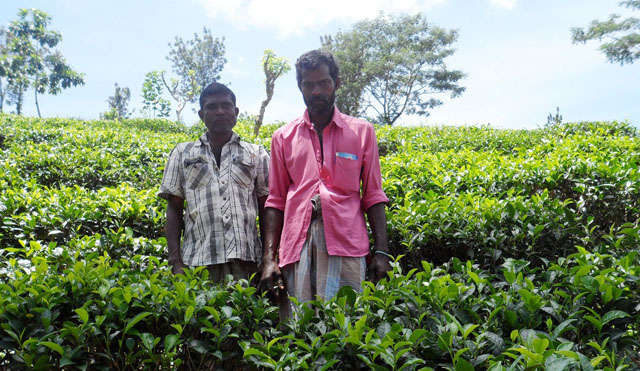November, 27, 2014

Alternate mechanism could be a win-win solution for workers and plantation companies
The plantation industry must move from the present unsustainable wage system to a win-win system of ‘guaranteed livelihoods’ which has already yielded successful results at several plantations for the industry to survive, a veteran planter points out.
Calling for the support of all stakeholders for this paradigm shift, Dr. Dan Seevaratnam, a top plantation industry stalwart with over 40 years of experience, reasons that the present-day ‘employment guarantee’ model needs to replaced by a ‘livelihood guarantee’ model. The present model was inherited by the Regional Plantation Companies (RPCs) at the time of the privatization of the industry and persisted thereafter, while the ‘livelihood guarantee’ model was developed following infusion of new thinking.
According to the ‘employment guarantee’ structure, RPCs, which manage estates, pay workers a daily wage for their labour. Workers have no proprietary interest in many cases. The wage is revised every two years through negotiations involving plantation companies and worker trade unions. In recent times, each round of negotiations has resulted in a 20% or more increase in the daily wage. This has led to Sri Lanka’s unit cost of production of tea becoming the highest in the world and has thus reduced the international competitiveness of the country’s entire plantation industry. This structure is also criticised as having contributed to low worker morale and productivity, as well as a host of other issues.
In contrast, experiments with the ‘guaranteed livelihood’ model, in which the worker continues to remain on the company’s payroll but also has proprietary interest in the particular estate’s growth, has yielded superior financial and non-financial benefits to both workers and Regional Plantation Companies.
Kahawatte Plantations PLC and Watawala Plantations PLC which were among the local pioneers of the concept have enjoyed tremendous results including improvement in the incomes of workers and greater worker satisfaction and productivity, creating a strong incentive for other plantations to follow suit in adopting the model. While initially the system was implemented in a small-scale, in some of the pioneering estates a significant proportion of the total crop is now produced under the ‘livelihood guarantee’ model, indicating the growing acceptance and usage of the model among the RPCs.
Emphasising the need to move away from the present employment-based structure, Dr. Seevaratnam quoting Albert Einstein says, “Doing the same thing over-and-over again and expecting different results is insanity.” However, the transition requires the strong support of all stakeholders including estate management and trade unions, he points out.
“The entire plantation industry will shift to the livelihood guarantee model within 20 years,” Dr. Seevaratnam predicts. “Members of ‘Generation Y’ especially have different aspirations and have to be managed differently; they prefer to be self-managed. The best solution is to give them a proprietary interest.”
In the ‘livelihood guarantee’ model, the plantation companies will delegate the management and maintenance of an area under cultivation to the workers who will also be the owners of the crop/harvest. The cost of the plant (in the case of replanting) is borne by the company. The crop, owned by the workers, will be bought by the companies at a guaranteed price, thus effectively transforming the workers to entrepreneurs residing in estates. This will enable the workers to exercise their initiative and substantial knowledge of agronomic activities, while functioning with greater autonomy and dignity. Plantation companies too would be able to re-direct resources to enhance value-addition, conduct international promotions and ensure greater alignment between products and customer needs, eventuating in moving up the value chain and in its wake realize a far greater price for Ceylon Tea in international markets.
However, the plantation companies will retain the management, cultivation and harvesting of a part of the land and will engage workers based on the present remuneration method for those lands – thus effectively providing workers a safety net during the lean cropping months.
Photo caption: Employees who manage plots of land at the Endana Estate owned by Kahawatte Plantations
Video Story